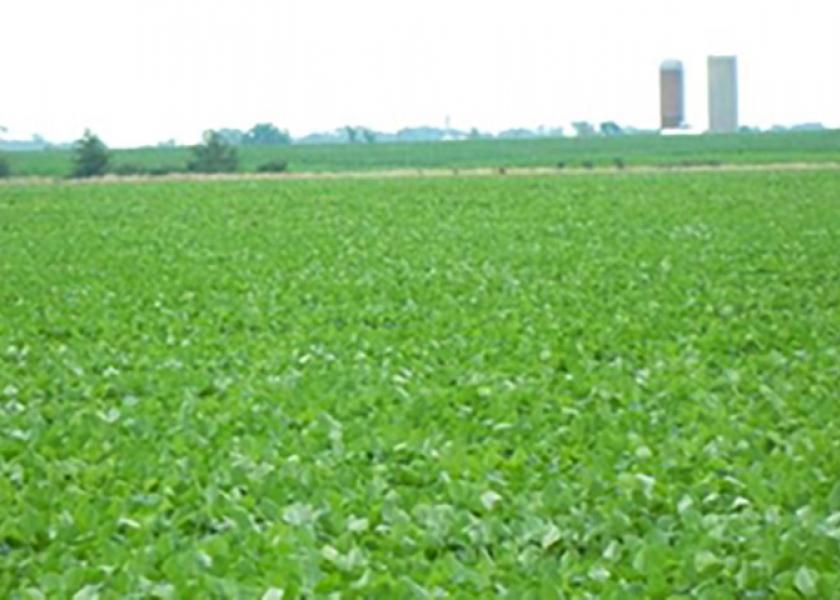American Farmers Plant More Soybeans as Corn Ends Profit Run

U.S. farmers from Louisiana to North Dakota are preparing to switch more land to soybeans as they seek to limit losses from a slumping corn market.
While corn remains the biggest domestic crop, prices have tumbled so much after two years of record harvests that the grain fetches less than it costs some farmers to produce. For the first time since the 1970s, corn planting will decline for a third straight season, while soybean acreage expands to the most ever, a Bloomberg survey of analysts showed.
Look no further than the 3,100 acres which Dan Anderson farms in Illinois. From 2007 to 2013, corn generated $150 more cash per acre, Anderson said. Now, there’s no revenue difference. Even though soybean prices also have dropped, they cost about half as much to grow and are better for the soil. The 62-year-old plans to plant more of the oilseed than corn for the first time ever.
“If prices don’t improve,” planting more soybeans means “I will lose less,” Anderson said by telephone from his farm near Milford, Illinois, about 100 miles south of Chicago.
When planting season starts in April and May, Anderson says he will increase the area for soybeans by 13 percent to 1,700 acres and cut corn by 18 percent to 1,400 acres. The cost of fertilizer for soybeans is more than two-thirds less, while seed and labor will be about half, he said.
Grain Surplus
For much of the previous decade, growing more corn had been an obvious choice for most farmers. Government mandates for ethanol, a grain-based fuel, helped spur domestic demand while global economic growth increased the need for the grain to feed cattle, chickens and hogs as the world consumed more meat. Prices surged to records in 2008 and 2012.
Those rallies encouraged more output, which created a global surplus and sent prices plunging even as costs for seeds, fuel and fertilizer rose. Corn futures on the Chicago Board of Trade closed Tuesday at $3.9775 a bushel, down 53 percent from a record $8.49 in 2012, while soybeans settled at $10.1175 a bushel, a slide of 43 percent from a peak of $17.89. Corn fell 0.4 percent on Wednesday while soybeans were little changed. Net-cash income will plunge 22 percent this year, the biggest drop since 1932, the U.S. Department of Agriculture said Feb. 10.
About half of U.S. corn and soybean farmers are in the red and the rest will barely break even, said Chris Barron, who farms 7,000 acres near Rowley, Iowa, and owns the management advisory Ag View Solutions. His Midwest clients spend on average $4.62 a bushel to grow corn, including land and management returns, and $10.10 on soybeans.
More Soybeans
To limit losses, farmers probably will expand soybean planting by 2.8 percent this year to 86.028 million acres, the most ever, according to a Bloomberg survey of 23 trading firms and analysts. Corn planting will drop 1.7 percent to 89.091 million, the lowest since 2010, the survey showed.
The USDA will make its first forecasts of 2015 planting and production at its the annual outlook forum this week, followed by a national survey of more than 80,000 growers beginning next week that will be released March 31.
The prospect of increased soybean planting in the U.S., the world’s biggest producer and exporter, comes as farmers in South America begin harvesting their biggest crops ever, which will send futures in Chicago to $9 this year, Rabobank Food & Agribusiness Advisory predicted last week.
Output Drop
Even with more acres planted, the return of more normal yields after last year’s record haul probably will mean a drop in U.S. soybean output of 2.8 percent to 3.856 billion bushels (97.95 million tons), analysts said in the Bloomberg survey.
Weather also may play a role. The arrival of warm, dry conditions by early April in the southern Midwest may encourage some growers to ditch their plans for more soybeans and instead plant more corn. Good growing weather can provide more of a yield boost to corn than for soybeans, which can mean a bigger revenue increase.
Even if U.S. soybean output declines, it may not matter. Producers outside the U.S. have expanded harvested acres by 33 percent since 2004 as a rising dollar increased profit potential for farmers in Brazil, Argentina, Russia and Ukraine, according to Dan Basse, the president of AgResource Co. in Chicago.
Perry Vieth, the founder of Ceres Partners LLC, which manages more than 59,000 acres in five Midwest states for investors, says farmers will plant less corn because there is less capital at risk growing soybeans. Tenant farmers are planning to plant 45 percent of their land to soybeans, up from 35 percent, while corn planting drops to 55 percent from 65 percent, he said.
“Corn and soybeans margins are thin,” Vieth said from Granger, Indiana. “Farmers will continue to plant corn on the best acres, but will shift to soybeans on more marginal land.”







